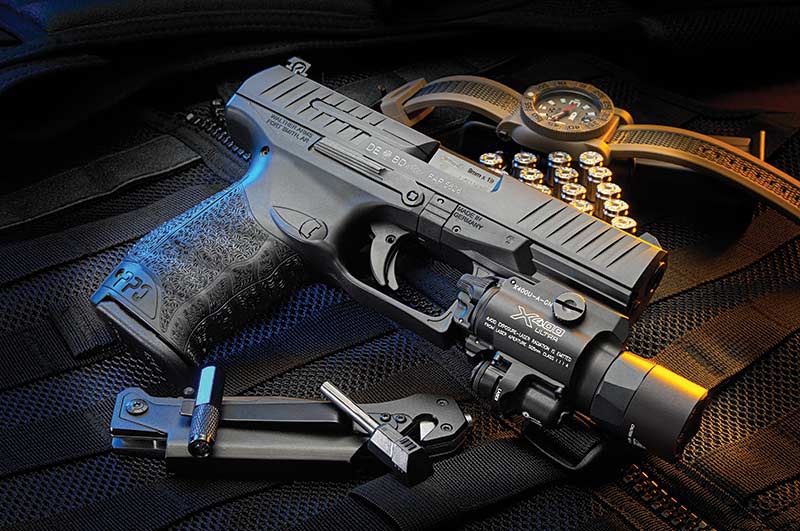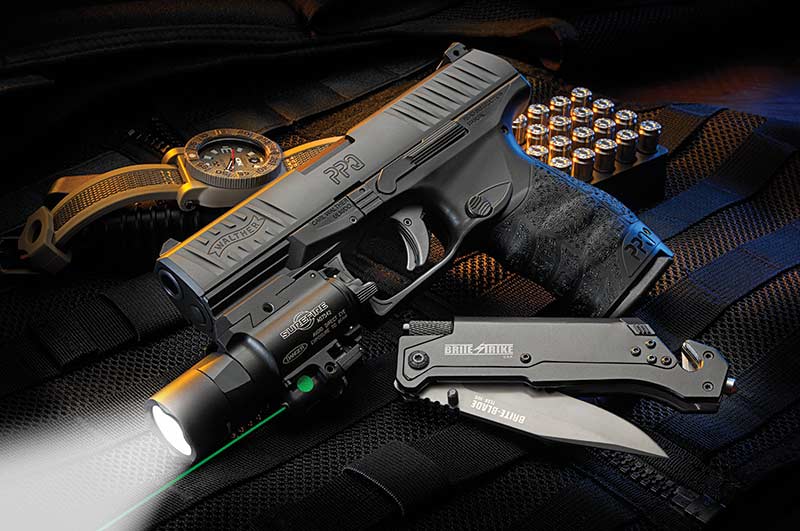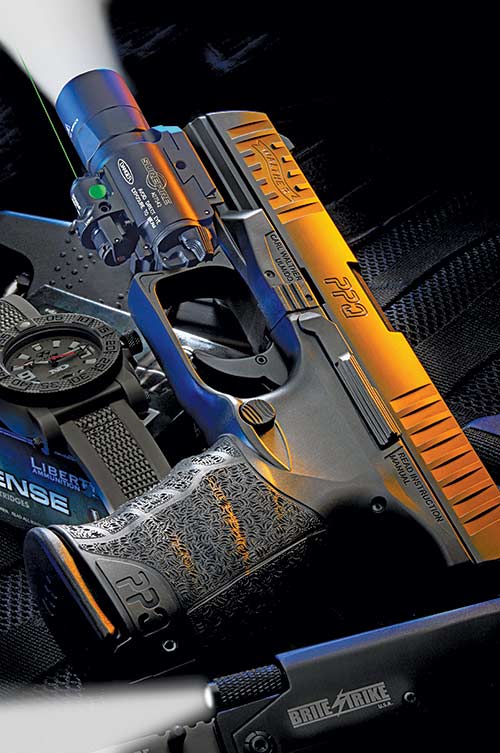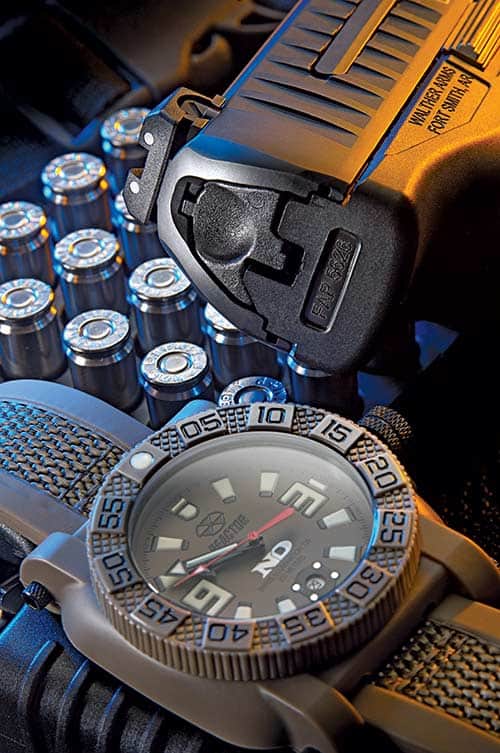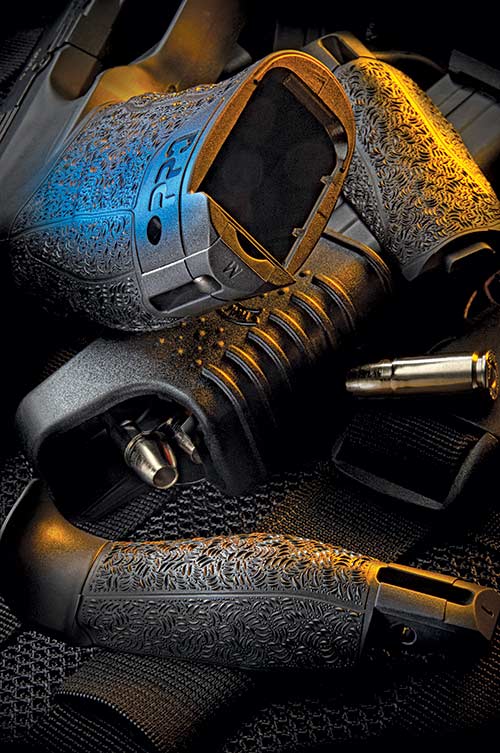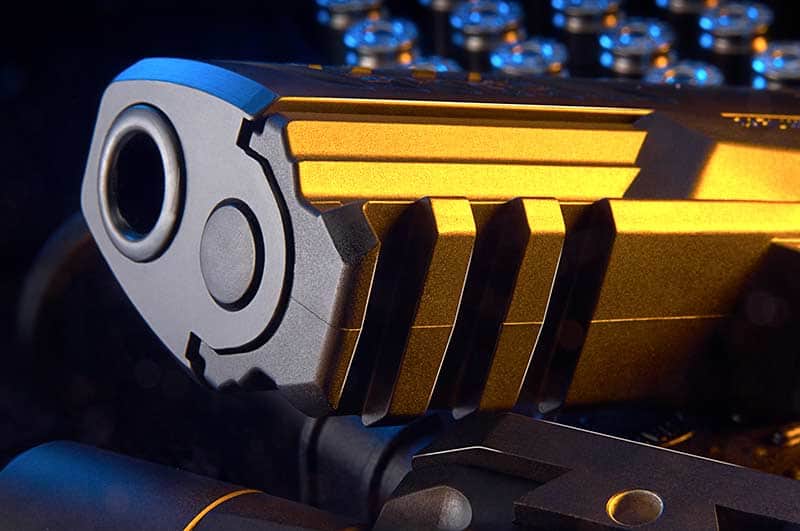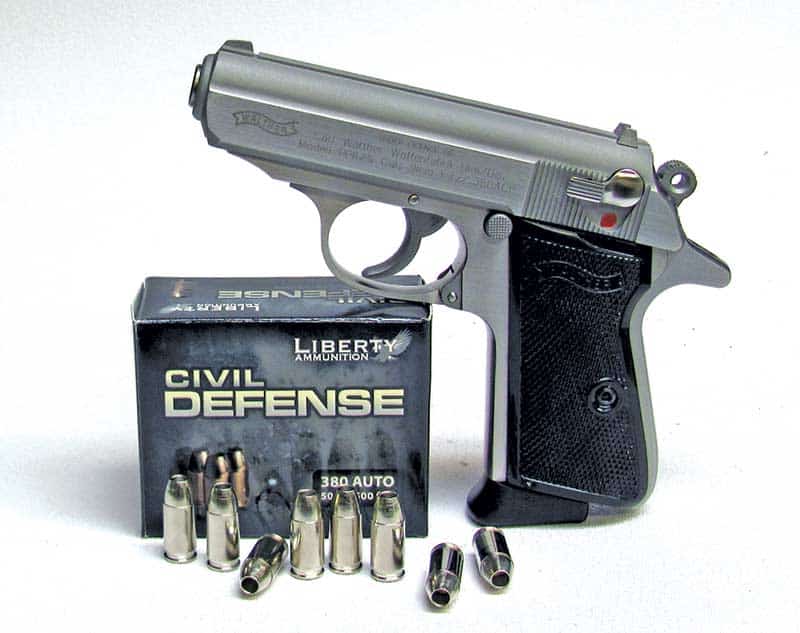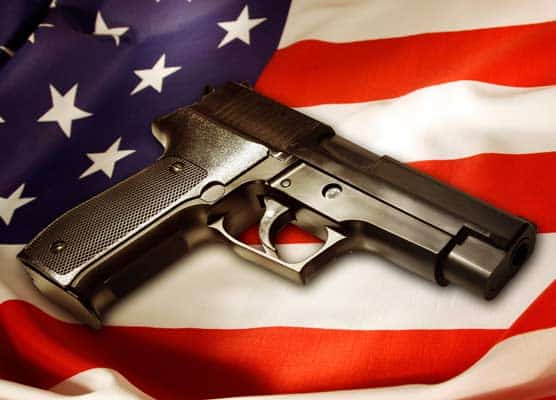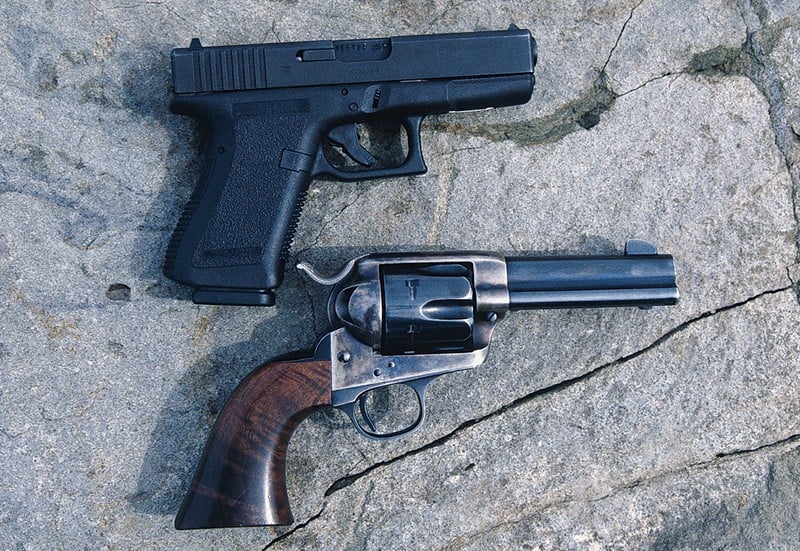Walther’s Polymer Game-Changer
The Modern PPQ M2 9mm — Walther Tradition Meets Modern Performance
Handguns are my passion. Everything from the .22 Rimfires through the big .50’s and anything in between as well the .36 and .44 percussion sixguns. Short-barreled pocket pistols, long-barreled hunting handguns, and Perfect Packin’ Pistols are all welcomed by me. Single- and double-action sixguns, semi-autos and single-shot pistols join the list. My good friend and lil’ brother, Terry Murbach, defined it well several decades back: “If it goes bang and hits where it points, what’s not to like?” But having said all this I have to admit I have some particular and special favorites such as the Classic Sixguns from Colt and Smith & Wesson, especially those from the 1870’s through the 1950’s. When it comes to semi-auto pistols there are three at the top of my list. These include the 1911 Government Model, naturally, the Browning Hi-Power — and the pocket pistols of Walther.
All three designs date back nearly a century or more and all are all-steel; no polymer frames here. This does not mean I shun the modern double-action/plastic polymer-framed semi-autos. We are blessed to be able to choose from a long list of superbly performing modern semi-autos, however, these are simply great tools. The three classics mentioned are all worthy of hanging in a firearms art gallery. They all function perfectly, however they are also the ultimate in form, with all three having exceptionally eye pleasing lines in their design.
Some companies today give us both choices, and we can choose a classic design or the latest modern iteration or both. Such a company is Walther, offering the PP/PPK all-steel .380 pocket pistol as well as a 9mm with a steel slide, polymer frame and the latest safety devices. I’ve been testing and extensively shooting a pair of Walthers lately, the PPQ M2 9mm and the PPK/S .380. The latter chambering, of course, is also known as the .380 ACP, 9x17mm, and 9mm Kurz, Kurz being the “K” in PPK.
A Classic Company
Walther firearms go back to 1886 with the founding of the company by Carl Walther with their first efforts being hunting and target rifles. In 1908 the company, now under the leadership of son Fritz, began making semi-automatic pistols. The classic PP (PP standing for “Police Pistol” or “Polizeipistole”) arrived in 1929 followed by the famous P-38 in 1938.
The factory was destroyed during World War II and Fritz moved the operation to West Germany in 1953. The company was acquired by Umarex in 1993 with Walther pistols now being imported by Umarex USA. For a time Walther was connected with Smith & Wesson with the distribution of the PPK/S, however all pistols are now made in Germany after a friendly separation of Walther and Smith & Wesson.
PPQ M2’s Heritage
The Walther PPK/S is an all-steel, in this case stainless steel, pocket pistol with a 3.3″ barrel and double-action operation for the first shot followed by single action thereafter. Sights consists of a square notch rear with a red rectangular dot under the notch which mates up with a post front sight with a red dot. The top of the slide is grooved with wavy lines all the way from the back of the front sight to the front of the rear sight to reduce glare. The de-cocking lever is located on the left side of the slide and the magazine release is also on the left side directly below the slide.
The magazine holds seven rounds and the number of rounds is verified by numbered witness holes on the right side of the magazine. There is also an extension on the bottom of the magazine which serves as a small finger rest. The PPK/S has a loaded chamber indicator at the back of the slide above the hammer; it does not have a magazine disconnect so it can be fired without the magazine in place. Grips are black checkered plastic. Trigger pull for the first shot double action is 15 pounds with subsequent single action pull being at 6 pounds. There is no cock-and-locked feature so you need to train to perform well with that first double-action shot.
Although it’s an 85-year-old design, the Walther .380 is still one of the easiest shooting .380’s available. This is not only due to the all steel construction and good sights but also the built-in extended tang on the back strap. With modern ammunition especially, recoil of light weight .380’s can be brutal and especially so for beginners. The Walther handles everything with ease.
The PPK/S with its short sight radius performed better for me than I expected. Five-shot groups at 20 yards are usually in the 2″ range. Buffalo Bore’s +P loads all clock out over 1,000 fps with their offering using the 90-gr. Gold Dot Hollow Point coming in just under 1,100 fps and grouping 2″. This is about as serious a load as one can find with normal weight bullets.
Liberty Ammunition offers a unique Civil Defense load consisting of a 50 grain hollow point bullet which clocks out at over 1,420 fps, groups under 2″ at 20 yards and is exceptionally destructive on pop cans, ripping them open with authority. The most accurate load I found of the 11 loads tested was the PMC 90-gr. FMJ. At 830 fps, this load groups in just over 1″ which is remarkable for such a little pistol, especially in my hands.
Modern Walther
While the all-steel PP series is classic, it’s still appropriate for today’s world. The heritage is clear for the new PPQ M2. The PP’s svelte, easy-to-handle record carries forward in today’s Walther. This 16-shot 9mm joins a large group of polymer-framed, safety-triggered, double-action, semi-automatic pistols in the market and does not need to take a backseat to any of them. If I’m going to shoot a lot of rounds through some of the safety-triggered semi-autos, that is triggers with the safety in the face of the trigger, I have to tape my finger as it takes a beating from the safety trigger.
The first thing I noticed about the PPQ M2 was the ease of operation of the trigger. As with all such triggers they can only be operated when the bar in the center is depressed by the trigger finger. The trigger pull is long but very smooth and using my Brownells Trigger Pull Gauge it measures less than 41/2 pounds making it as good a trigger as I have found on any factory semi-automatic pistol so equipped.
Examining the PPQ we find excellent sights of the 3-white dot configuration with a square rear sight mated with a front post. The rear sight is click adjustable for windage while elevation can be adjusted by replacing the front sight with a different height. The slide has cocking grooves on both sides below and behind the front sight and below the rear sight; both facilitating ease of operation of the slide. The slide stop lever is located on the left side above and behind the trigger, and with all semi-autos, to chamber a round initially the slide should be retracted to the rear slightly to allow the slide stop to deactivate and then the releasing of the slide chambers the round. The slide, as well as the frame, is melted with no sharp edges to interfere with hands or clothing.
The polymer frame has a Picatinny rail in front of the triggerguard to accept a light or laser, the triggerguard is squared off and grooved at the front for those who prefer to place a finger of the offhand in this position (something European designers insist on doing!), and the very positive magazine release is located just behind the triggerguard. This button is large enough for ease of operation and although located on the left side it can be moved to the right side for lefties.
The grip frame has integral molded stippling all the way around for a secure hold and it features interchangeable back straps of differing sizes with two extras provided; I found the one already installed much to my liking. At the bottom of the backstrap is a concealed lanyard loop.
Great Ergonomics
The magazine releases very easily and is a double stack, holding 15 rounds. If you think you need it, an extended magazine holding two more rounds is available from Walther. An extra magazine is provided, along with a much appreciated magazine loader. Everything is packed in a lockable padded plastic case. The back of the magazine has numbered witness holes to indicate the number of rounds. There’s the safety trigger with its ease of operation; along with a loaded chamber indicator on the right side of slide at the rear of the extractor. There’s no magazine disconnect safety and the PPQ will fire without the magazine in place. That makes sense to me.
Takedown of the PPQ M2 is quite easy. Reach over the top of the slide and press down on the takedown catch on both sides of the frame. The slide can then be removed by moving it forward and off the frame. Turning the slide upside down allows you to remove the recoil guide assembly while compressing the spring. The barrel can then be removed from the slide. It takes a lot less time to do than to describe.
John Likes It
The PPQ M2 weighs just 23 ounces, however it’s quite easy to shoot even with +P 9mm loads. My one handload tried, Hornady’s 115-gr. XTP-JHP over 5.7 grains of the new Hodgdon CFE Pistol Powder, clocked out at 1,250 fps and grouped five shots in 1″ at 20 yards. American Eagle and Winchester 115-gr. FMJ’s both put five shots into 13/8″with muzzle velocities of 1,185 fps and 1,159 fps respectively. Black Hills and Hornady 124 JSP’s at 1,150 fps and 1,132 fps respectively both put their five shots into 11/2″.
Liberty Ammunition’s Civil Defense 50-gr. HP has a muzzle velocity of nearly 2,100 fps (yes that is 2,100 fps!), and groups five shots in 11/4″, literally exploding cans of pop — ripping them open and scattering pieces about. CCI’s Blazer 115-gr. JHP resulted in an absolutely amazing group with two shots in one hole and three shots in the other hole and a center to center distance of only 0.5″! I wouldn’t even consider trying to duplicate that!
If you’re in the market for a polymer-based defensive pistol, make sure you let your eyes stray beyond the obvious contenders. Let the Walther PPQ M2 have a crack at your final decision.

